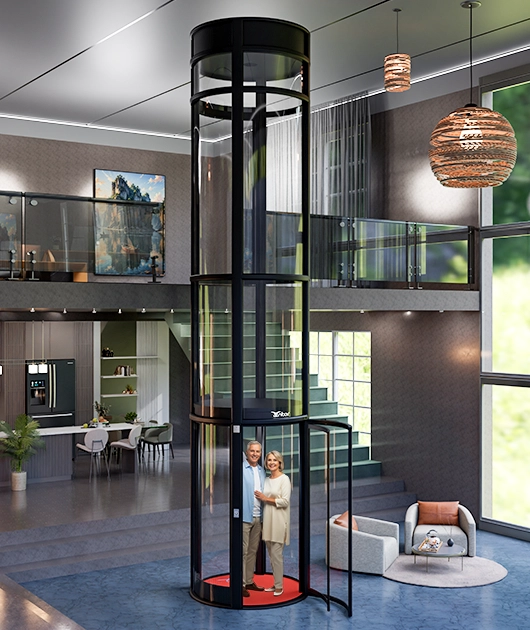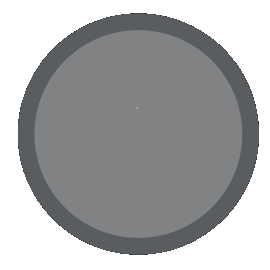
From multi-level bungalows in Kuala Lumpur to hillside mounts in Penang to modern family homes in Johor Bahru, homeowners are reconsidering how they navigate their spaces. A pneumatic elevator, once considered a particular luxury, is becoming a practical, energy-aware, space-saving solution with clean installation and design support for interior decoration. Now that you are researching pneumatic elevator pricing in Malaysia, you probably have three questions:
1. What actually drives the price?
2. How do I find the best value versus safety or service?
3. What’s my total cost of ownership after 5–10 years?
This guide unpacks everything you will need to be comfortable planning with Nibav Home Lifts—the compact and refined solution built for Malaysian homes.
Table of Contents
- What Are You Paying For and Why
- How a Pneumatic Lift Reduces Hidden Costs
- What the Best Deal Means
- A Homeowner Pricing Matrix
- Factors Specific to Malaysia That Impact Price
- The Total Cost of Ownership View
- Quote
- Smart Negotiating Without Compromising
- Why Homeowners Select Pneumatic
- Sample Planning Scenarios
- Advantage
- Step-By-Step Checklist to Purchase Your Lift
- Frequently Asked Questions
What Are You Paying For and Why
Residential pneumatic systems are designed to fit your home with compact footprints for installation. Your final pneumatic elevator price is going to be made up of four large buckets:
A. Home Scope and Structure
- Stops and travel height: G+1, G+2, or G+3, and headroom vs. floor-to-floor height.
- Placement complexity: Corners of the house, voids, and/or tight landings; modifications to ceiling or floor trims may be required.
- Logistics: Condo by-laws on hoisting limits, delivery access, and parking permits will require approval.
B. Configuration
- Cabin diameter or size class: Two-person lift versus larger cabins.
- Doors and controls: Standard buttons versus assisted options and child lock.
- Aesthetics: Smoked or clear panels, ambient lighting package, and finish palette.
C. Performance and Safety
- Safety on descent: In the event of a power failure, the lift will autonomously descend to the first landed level.
- Sensors and intercom: Overload and obstruction detection, emergency signaling, and two-way communication.
- Comfort: Precise leveling, soft start and stop, and acoustic insulation.
D. Service and Warranty
- Aftermarket coverage: Preventive maintenance schedules, response time, and availability of local parts.
- Warranty details: Unambiguous coverage on the structure, motors/blowers, control boards, and seals.
- Documentation: Handover training, an operations manual, and transparent service plans.
How a Pneumatic Lift Reduces Hidden Costs
When thinking about price, think about what you won’t have to pay for:
- No pit / no machine room: Nibav’s self-supporting panoramic shaft saves civil works, mess, and time in the renovation schedule.
- Minimal structural changes: Clean interfaces at the ceiling and floor, and modular sections can be taken through standard doorways.
- Energy usage primarily on ascent: Air-pressure balancing on descent further reduces energy consumption over time.
- No oils/no grease: Compared to hydraulic systems, you reduce consumables and their environmental impact.
- Whisper-quiet operation: Less overall noise often means less need for acoustic add-ons later.
What the Best Deal Means
A low sticker number does not automatically mean you got the best deal. The best deal is understanding the number in relation to:
- Scope clarity: Itemised inclusions (stops, finishes, electrical points, minor making-good) to avoid surprises.
- Installation timeline: Factory-engineered kits allow for faster, cleaner installations; confirm a realistic timetable that fits your readiness.
- Service proximity: Nibav’s local technicians, stocked parts, and guaranteed responses build confidence for the long haul.
- Warranty simplicity: No maze of exclusions—core components should be clearly covered.
A Homeowner Pricing Matrix
Stops and Height
- Basic choice: G+1 (two stops)
- Cost-adding upgrades: G+2, G+3, extra landings
- Value note: Height and landings influence materials and installation scope most.
Cabin Size
- Basic choice: Compact two-person
- Cost-adding upgrades: Bigger diameter or capacity
- Value note: Bigger cabins require more materials, logistics, and installation time.
Aesthetics
- Basic choice: Standard finish
- Cost-adding upgrades: Smoked glazing, premium finishing, star ceiling, designer rails
- Value note: Strong return if the lift is a visible feature.
Controls
- Basic choice: Standard buttons
- Cost-adding upgrades: Hands-free, child lock, display integrations
- Value note: Future-proof for kids, seniors, and convenience.
Safety
- Basic choice: Core protections
- Cost-adding upgrades: Extra sensors, extended communication features
- Value note: Keep essentials built-in—don’t optionalize safety.
After-sales
- Basic choice: Basic plan
- Cost-adding upgrades: Preventive plan, priority response
- Value note: Low annual cost for big uptime and peace of mind.
Factors Specific to Malaysia That Impact Price
Countries build and live differently. In Malaysia, consider:
- Humidity and heat: Materials and seals must account for long-term corrosion and fogging.
- Power stability: During storms, automatic descent and durable control boards are wise choices.
- Community rules: Approvals from your condo or strata, and conditional lift-in routes, may influence the plan.
- Festive calendar: Delivery and installation windows can be tighter—share timelines early with Nibav Home Lifts.
The Total Cost of Ownership View
Comparing pneumatic elevator costs to traditional lifts requires more than purchase price—it requires total cost of ownership:
- Energy profile: Power is used primarily while the cabin ascends; energy consumption is very low to none on descent, depending on design.
- Maintenance cadence: Traditional lifts often have more moving parts and higher wear; pairing Nibav units with preventive maintenance supports stable operation.
- Parts availability: Stocked locally—no waiting weeks for essential components.
- Resale signal: In multigenerational markets, a professionally installed Nibav Home Lift is viewed as a premium amenity.
Quote
Following a quotation for pneumatic lift price, ensure it provides:
Technical scope: Stops, travel height, cabin diameter, door style, and power requirements.
Site readiness: Electrical point, minor making-good, trims, and baseplate details.
Logistics: Delivery method, stairwell/door clearance, and the lift-in plan.
Installation days: On-site days, access hours, and dust control.
Safety package: Descent protection, sensors, intercom, lighting, ventilation, and leveling.
Aesthetics: Glazing specification, finish palette, and lighting options.
Warranty and service: Term, response times, and parts coverage.
Exclusions: Items you or your contractor are responsible for.
Smart Negotiating Without Compromising
You want the best price for a pneumatic lift without compromising safety or after-sales. Consider:
- Bundled value: Pair installation with a preventive maintenance plan for better overall economics.
- Calendar intelligence: Schedule installation during off-peak windows when you can be more flexible.
- Choice of finishes: Keep structure/specification intact; optimise value with standard finishes and lighting.
- Payment milestones: Align payments with installation progress so both parties feel secure.
- Ask for clarifications, not cuts: Build value by clarifying inclusions rather than removing safety.
Why Homeowners Select Pneumatic
Beyond price, pneumatic lifts shift routines in subtle but valuable ways:
- Inclusive living: Seniors and children move between levels safely and independently.
- Quiet interiors: Sleep and conversations remain undisturbed.
- Clean installs: Shorter project durations with minimal rebuilding and less dust.
- Design boost: Panoramic cabins function as light wells to brighten interiors.
- Future-proofing: Your “forever home” stays usable as needs change.
Sample Planning Scenarios
Even though Nibav Malaysia will provide customised quotations, these patterns help set expectations:
- G+1 retrofit with compact cabin: Lowest scope complexity; ideal for stair voids or corners. Anticipate savings from minimal making-good and standard finishes.
- G+2 new build with a focal feature: Moderate scope; consider premium glazing and ambient lighting for a design statement. Coordinate wiring placement with electrical trades early.
- G+3 multi-generational home: Highest scope; prioritise comprehensive safety and fast service response. Bundle a multi-year maintenance plan for price consistency in the years ahead.
Advantage
When you choose Nibav Home Lifts, you partner with experts in residential pneumatic elevators for Malaysia.
- Malaysia-ready engineering: Compact elevators, panoramic viewing options, fully self-supporting structure, minimal civil works, and clean retrofits.
- Transparency at every stage: Itemised inclusions/exclusions with clear timelines so you always know what you’re getting.
- Local support: Technicians with stocked parts and responsive after-sales to keep your lift smooth and whisper-quiet.
- Design options: Finishes, glazing, and lighting that complement tropical-modern aesthetics.
- Future-proofing your investment: Nibav preventive plans, upgrade paths, and durable materials protect your investment.
Step-By-Step Checklist to Purchase Your Lift
Move from research to installation without stress:
- Identify needs: Number of stops, total travel height, location, and preferred cabin size.
- Define safety: Auto-descent, overload/obstruction sensors, intercom, and leveling.
- Choose finishes: Panoramic glazing, lighting, and rail/handle style.
- Request itemised quote: technical scope, logistics, installation timeline, exclusions, warranty.
- Plan the calendar: approvals, delivery windows, and site readiness.
- Secure after-sales: Nibav preventive maintenance plan and locally stocked parts.
- Confirm handover: training, manuals, hotline, and maintenance schedule.
Frequently Asked Questions
Q1. What is the single biggest determinant of price?
Rise and stop height, followed by cabin width and finish, determine most of the materials and installation scope.
Q2. Will I require major structural works?
Generally, no. Nibav’s pneumatic system is self-supporting with no pit and no machine room required. Most civil works are minimal.
Q3. How long does installation take?
As Nibav units are pre-engineered and modular, installations generally take days, not months—assuming the site is prepared and approvals are in place.
Q4. Is it energy-efficient?
Yes. The pneumatic elevator uses power while travelling up; air pressure enables efficient descent.
Q5. How do I manage ownership costs predictably?
Select a Nibav preventive maintenance plan, ensure local parts availability, and secure warranty coverage for key components such as the blower/motor, seals, and controls.
